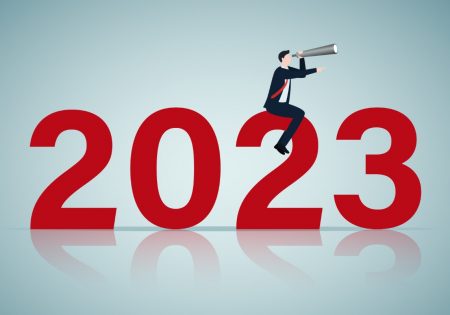For more stories like this, sign up for the PLANADVISERdash daily newsletter.
DOL Rules Have Popularized ESG Investing Among DC Plans
Two experts with Northern Trust Asset Management, Sabrina Bailey, global head of retirement solutions, and Mamadou-Abou Sarr, global head of environmental, social and governance (ESG) investing, recently penned a helpful analysis examining the proper role of ESG in defined contribution (DC) retirement plans.
Roughly two years after the Obama administration moved to open up the use of ESG investing factors under the Employee Retirement Income Security Act (ERISA), the pair say they are seeing tremendous interest from DC plan clients to use ESG to “mitigate risk, seek opportunities and offer more options to their participants.” ESG can help a sponsor meet all of these goals, Sarr and Bailey agree, but there are some considerations that must be taken into account to ensure ESG themes don’t conflict with the strict tenants of the ERISA.
“First and foremost, are there strong organizational values that should be reflected in the retirement plan investment menu?” Baily asks. “This is the beginning of defining the potential role of ESG in a DC plan. Women and Millennials in particular are creating demand for investments that align with the corporate values of their employers.”
Of course, under ERISA, there are limits on the extent to which plans can consider social values when picking investments, Sarr warns. Even with the Obama-era expansion of ESG in DC plans, the sponsor must carefully consider the risk-return profile. If an investment can reasonably be expected to underperform because of its commitment to a certain set of values, it’s probably not a good fit for the DC world. This was more of an issue in the past because ESG funds were typically designed to simply “screen out” certain stocks, say alcohol, tobacco or firearms companies. Today the product set is far more sophisticated and takes a more positivist approach leveraging ESG analysis to improve decisionmaking, rather than simply relying on negative screens.
“ESG analytics and ratings have improved dramatically over the years,” Sarr explains. “ESG ratings can now be used as a risk mitigation technique or an opportunity-seeking technique.”
The idea is that the highest-rated companies from the ESG perspective should stand out against their competitors and should have lower resource-scarcity risk or waste-processing risk—and less potential for controversy.
“Ratings can flag companies that would worry a typical ESG investor, such as corruption at the board level,” Sarr observes. “And it’s not only about screening them out. ESG ratings can be used to help rationally target companies to overweight or underweight in a portfolio.”
The Northern Trust analysis goes on to urge retirement plan stakeholders to think about how the “active-versus-passive debate” might apply to the ESG discussion: “Active strategies allow investors to take a best ideas stock picking approach to investing, which can lead to potentially rewarding performance and likely more volatility. For investors looking for ESG and thematic investments with a potential outperformance target, active strategies could be appropriate.”
On the passive side, the benefit is obviously broad and efficient market exposure. According to Sarr and Bailey, “generally the passive route is the best way for DC plan clients to gain exposure and diversification with timed rebalancing and clear ESG investment rules. For those DC plans that have an ESG policy or would like to marry their values with their investments, passive vehicles may remove uncertainty over how investments are chosen.”
NEXT: An ERISA attorney’s take on ESG
Asked to riff on the themes shared in the Northern Trust paper, George Michael Gerstein, counsel with Stradley Ronon, broadly agreed that ESG investing is an important and expanding topic for DC plan sponsors to think about.
“The interest in it is staggering, across the board,” he tells PLANADVISER. “It is clear to me that retirement plans and major asset managers are really focused on this. BlackRock, State Street Global Advisors and many other firms doing exciting things, and sponsors should take note.”
Like the Northern Trust analysis, Gerstein feels the ESG issue is “fundamentally evolving.”
“People in the DC plan world were worried about the risk of implementing ESG investing until 2015, when the DOL under the Obama administration announced ESG no longer had to be thought of simply as a tie-breaker between economically indistinguishable investment opportunities,” he explains. “That was the event that really opened up ESG for retirement plans.”
Gerstein says he is encouraged by recent product development in the DC space that is “about so much more than screening out sin stocks.”
“We are seeing ESG investing that is about determining which companies are vulnerable to climate change, resource scarcity, waste processing challenges, political instability—all of these things that can help you set long-term portfolio weights more effectively,” Gerstein adds. “For example, think of Coca-Cola. It may surprise readers to learn that Coca-Cola is at the forefront of confronting climate change right now and figuring out how the challenges of climate change will impact the business. They are worried about droughts and many other challenges that are already materially significant risks today, and which will be made potentially far worse by climate change.”
Gerstein concludes that, while ESG is growing strongly and should continue to do so in the DC space, there is still a lack of clarity and standard disclosure practices around the way individual companies listed on the stock exchanges are describing their climate risk.
“It can create transparency problems for fiduciaries,” he warns. “Different companies use different metrics, or no real metrics, to talk about ESG, and so it can still be tough to measure on a comparative basis different ESG opportunities. So in that sense it is still somewhat risky. Encouragingly, there are task forces working right now to bring ESG disclosure standardization to the market. As the analysis sharpens, this picture will continue to improve.”
You Might Also Like:

Crossmark’s Doll Projects Long-Predicted Recession to Materialize in 2024

Doll Scores 50/50 on 2023 Predictions
